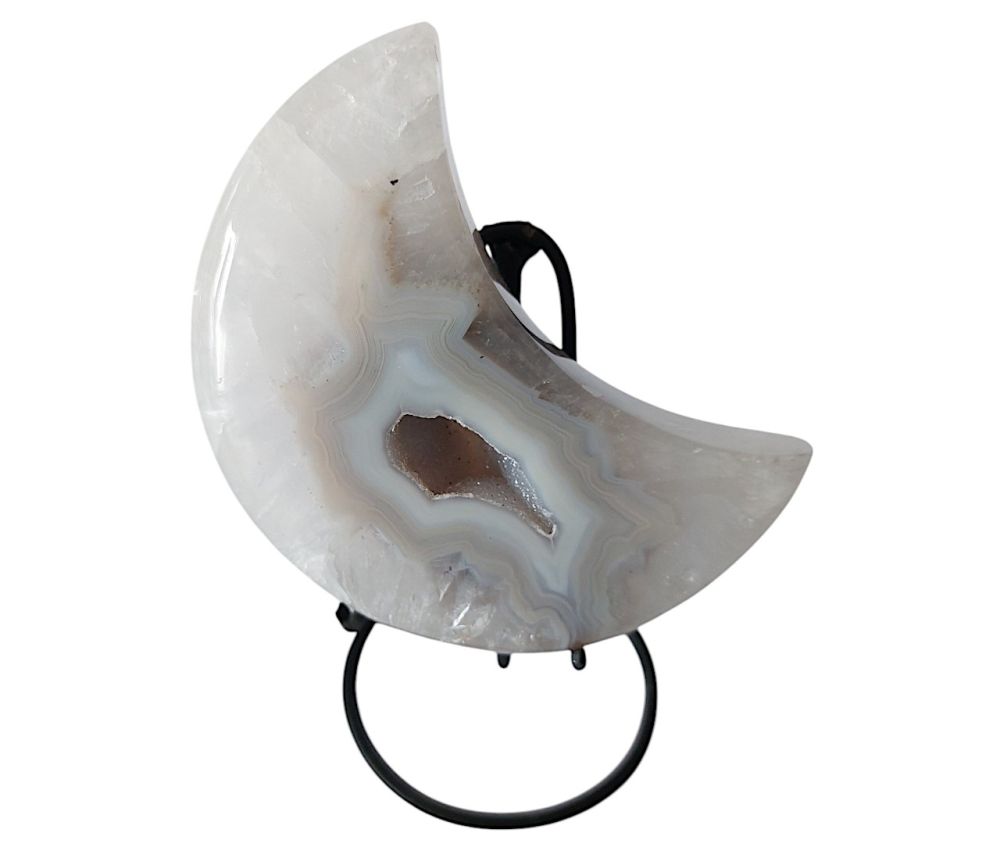We use cookies to make your experience better.
TimmersGems has a new website, existing customers also need to register again.
Polished Agate Moons in top quality with “Rock Crystal Cavities” from Rio Grande do Sul/Brazil. Per piece 0.3-0.7 kg
No cheap Chinese agate moons, but top-quality agate moons. (No cracks in the edges).
Availability:
In stock
SKU
122160
Agate is a transparent, but sometimes also opaque, variety of quartz and a subvariety of chalcedony. The chemical structure of agate is identical to that of jasper, flint and chert and is often found together with opal. The colourful, striped specimens are used as semi-precious stones. The name agate comes from the Greek Ἀχάτης, Achatès, the name of the current river Dirillo in the south of Sicily, where agates and other chalcedony were found. Traditionally, agate was worn as a lucky stone or for healing. Agate was also used to make consumer goods, such as buttons. A number of medicinal properties are attributed to agate, such as protection during pregnancy and against headaches, skin conditions and balance disorders. According to various literary works, agate belongs to the zodiac signs Aquarius, Taurus, Scorpio, and Gemini. Agate compounds are formed from a solution of silicic acid that fills cavities in older rocks. You can artificially stain the stones to achieve more vibrant colour combinations than those in nature. The main sources of agate are Brazil, Uruguay and the United States (Oregon, Washington, and around Lake Superior). Closer to the Netherlands and Belgium, agate is also found in the Hunsrück in Germany. Chemical composition: SiO₂ + Al, Ca, Fe, Mn Crystal system: belongs to chalcedony quartz crystals, trigona Cleavage: none. Color: light blue or gray, but it can also be green Streak color: none Luster: vitreous, matt, satin Hardness (Mohs): 6.5 to 7. Average density: 2.65 kg/d Transparency: transparent to translucent
| Dimensions | Divers |
|---|---|
| Country of Manufacture | Brazil |












